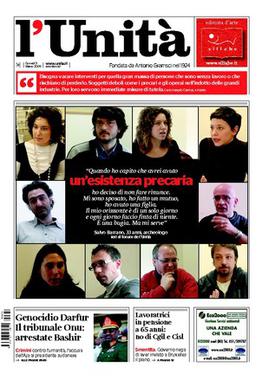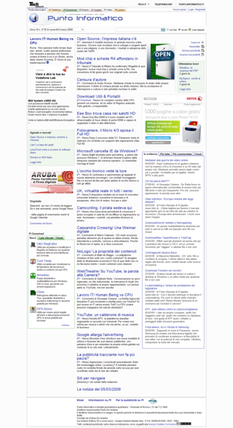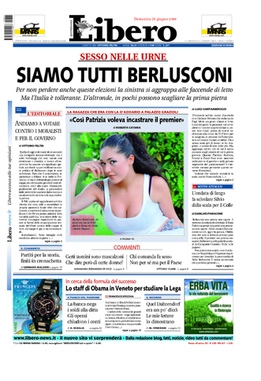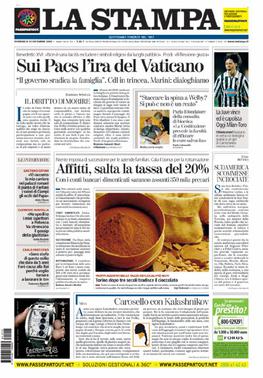
Corriere della Sera is an Italian daily newspaper published in Milan with an average circulation of 246,278 copies in May 2023. First published on 5 March 1876, Corriere della Sera is one of Italy's oldest newspapers and is Italy's most read newspaper. Its masthead has remained unchanged since its first edition in 1876. It reached a circulation of over 1 million under editor and co-owner Luigi Albertini between 1900 and 1925. He was a strong opponent of socialism, clericalism, and Giovanni Giolitti, who was willing to compromise with those forces during his time as prime minister of Italy. Albertini's opposition to the Italian fascist regime forced the other co-owners to oust him in 1925.

la Repubblica is an Italian daily general-interest newspaper with an average circulation of 151,309 copies in May 2023. It was founded in 1976 in Rome by Gruppo Editoriale L'Espresso and led by Eugenio Scalfari, Carlo Caracciolo, and Arnoldo Mondadori Editore as a leftist newspaper, which proclaimed itself a "newspaper-party". During the early years of la Repubblica, its political views and readership ranged from the reformist left to the extraparliamentary left. Into the 21st century, it is identified with centre-left politics, and was known for its anti-Berlusconism, and Silvio Berlusconi's personal scorn for the paper.

l'Unità is an Italian newspaper, founded as the official newspaper of the Italian Communist Party (PCI) in 1924. It was supportive of that party's successor parties, the Democratic Party of the Left, Democrats of the Left, and, from October 2007 until its closure in 2017, the Democratic Party.
il Giornale, known from its founding in 1974 until 1983 as il Giornale nuovo, is an Italian-language daily newspaper published in Milan with an average circulation of 28,933 copies in May 2023. In 2006, it was considered one of Italy's main national newspapers in Italy.

L'Espresso is an Italian progressive weekly news magazine. It is one of the two most prominent Italian weeklies; the other is the conservative magazine Panorama. Since 2022, it has been published by BFC Media.
Maurizio Molinari is an Italian journalist, as of April 2020 editor-in-chief of the daily la Repubblica, after serving five years as editor-in-chief of la La Stampa.

Giornale di Sicilia is an Italian national daily newspaper for the island of Sicily. It is based in Palermo, and is the best-selling newspaper in Sicily. Since 2017, it is owned by the daily newspaper of Messina, Gazzetta del Sud.

Punto Informatico is an Italian online newspaper.

Il Foglio is an Italian daily newspaper with circulation around 25.000 copies per day, with an overall spread of 47.000, as of 2015. It was founded in 1996 by the Italian journalist and politician Giuliano Ferrara. Since 2015, it has been directed by Claudio Cerasa.

Libero, also known as Libero Quotidiano, is an Italian daily newspaper published in Milan with an average circulation of 22,709 copies in May 2023. In 2004, Angelo Agostini categorized Libero, alongside Il Foglio and l'Unità, as an activist daily, in contrast to the institution daily like Corriere della Sera and La Stampa, and the agenda daily like la Repubblica.

Il Giorno is an Italian-language national daily newspaper, based in Milan, Italy; it has numerous local editions in Lombardy.

il Resto del Carlino is an Italian newspaper based in Bologna, and is one of the oldest newspapers in Italy. Its rather evocative name means "the change you get from a carlino", which the smallest part of the Papal baiocco : a sheet of local news was given out in shops to make up for the change owing after buying a cigar.

il Fatto Quotidiano is an Italian daily newspaper owned by Editoriale Il Fatto S.p.A. and published in Rome. It was founded on 23 September 2009 and was edited by Antonio Padellaro until 2015, when Marco Travaglio became the editor. The three deputy editors are Marco Lillo, Salvatore Cannavò and Maddalena Oliva.

Il Mondo was a weekly political, cultural and economic magazine founded by Gianni Mazzocchi and directed by Mario Pannunzio. It existed between 1949 and 2014.
Sette, also known as Corriere della Sera Sette, is a news, political and lifestyle magazine based in Milan, Italy. The magazine is the weekly supplement of the daily newspaper Corriere della Sera. It was the first colour supplement distributed with a daily paper in Italy.

Furio Colombo is an Italian journalist and politician. He is the former editor-in-chief of L'Unità.
Domenico Bartoli was an Italian journalist and essayist. In 1960 he became the director of Il Resto del Carlino, a Bologna-based mass-circulation daily newspaper, remaining in the position for ten years.

Giampaolo Pansa was an Italian journalist-commentator and novelist, especially during his late years. Most of his writings were rooted in recent or contemporary history, notably with regard to the antifascist resistance of the Mussolini years.

Libero is an Italian web portal owned by Italiaonline and founded by Infostrada in 1994 as a website to assist users in browsing the Internet, which at the time still had a fee, and in configuring an e-mail. Alongside Virgilio.it, a web portal created in 1996, and the two most widely read newspapers, Corriere della Sera and la Repubblica, Libero is a household name within Italian online news. Alongside Virgilio, Libero was the local-web complementation for large international sites like Google and Facebook among websites attracting the most online traffic in Italy.















